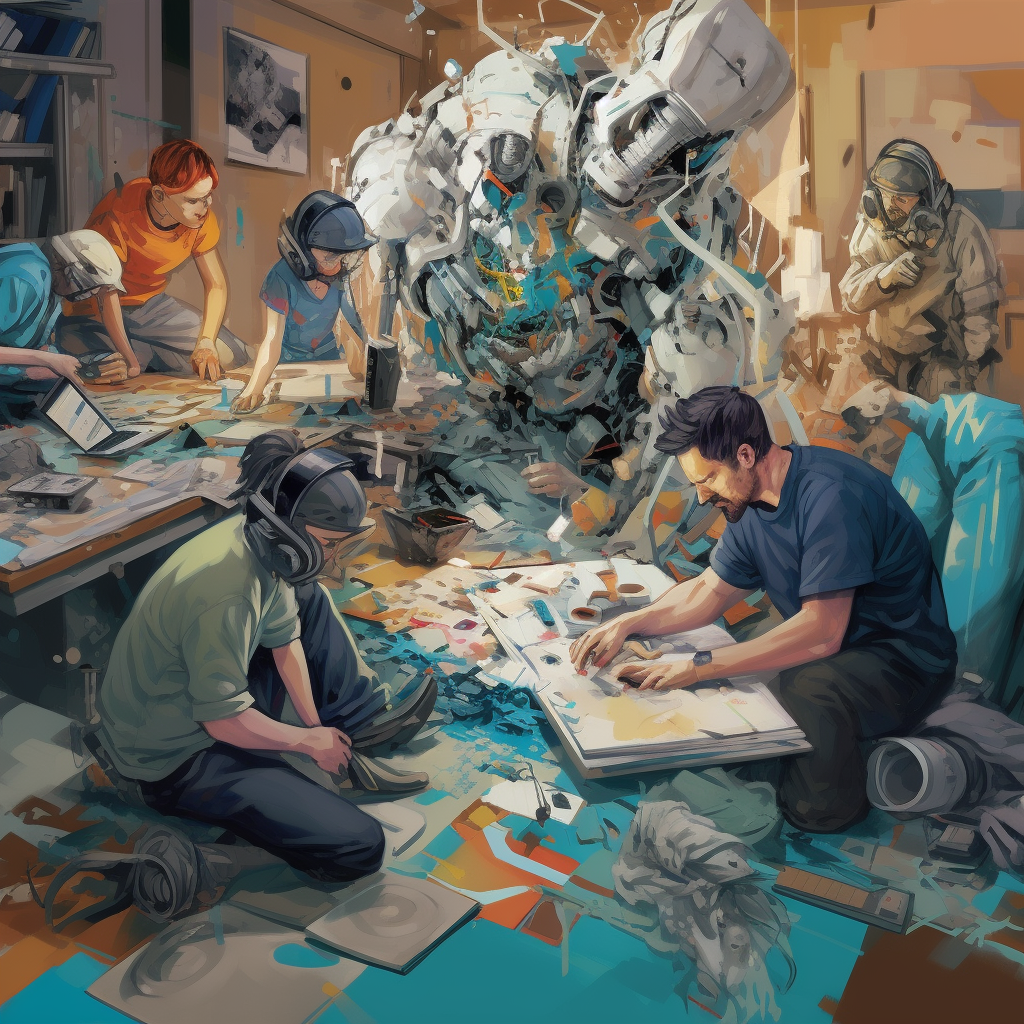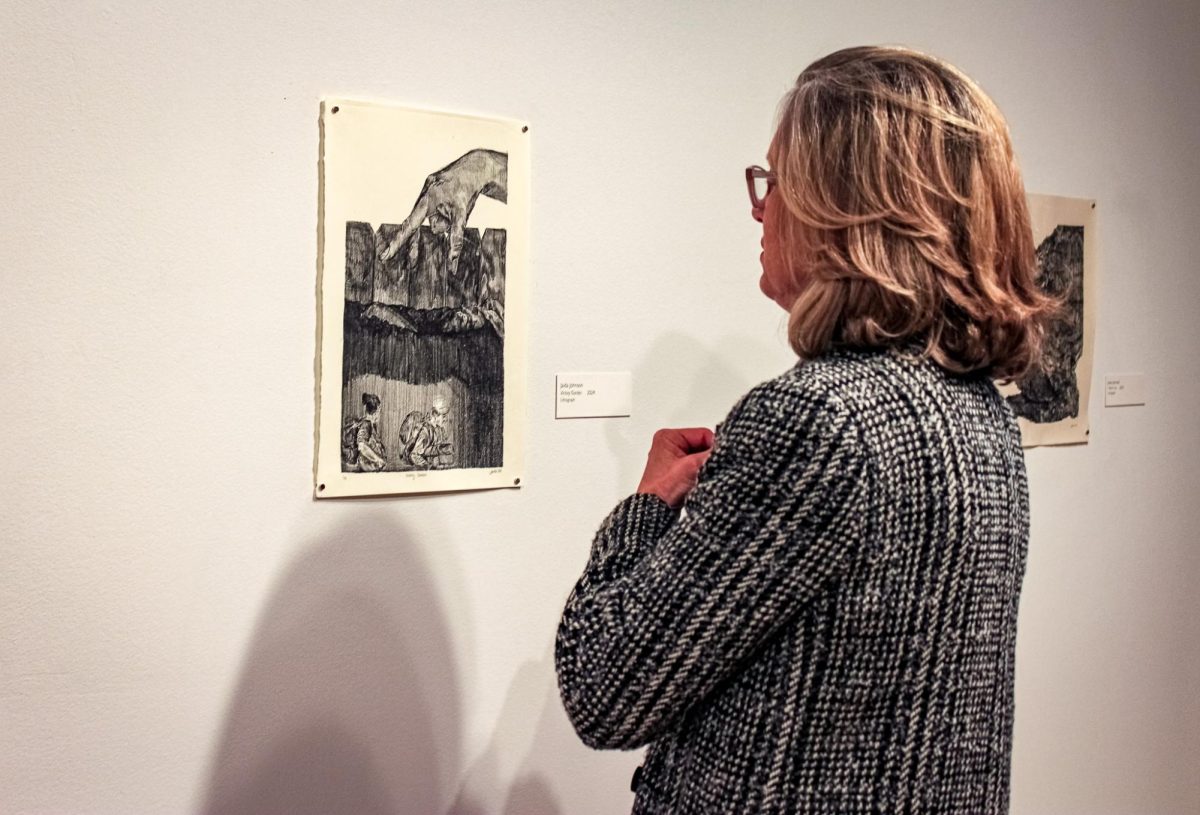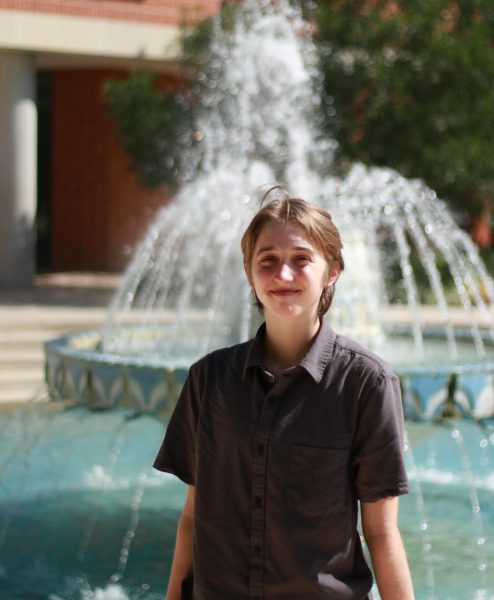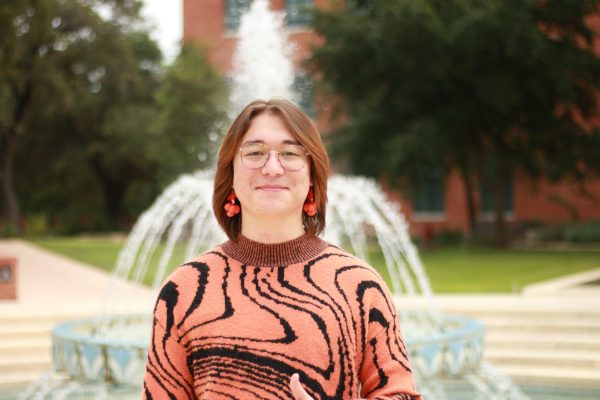Pedro Ordoñez Acosta, senior finance and art double-major, is a painter. Acosta uses generative artificial intelligence (AI) programs, such as DaVinci and DALL∙E 2, as a part of his creative process. He said they help him find a starting point for his paintings, which often become responses to the AI generated images they’re inspired by.
“It helps with that block of starting a project,” Acosta said.
Timothy Appignani, communication professor at Trinity, is a playwright. Appignani has researched generative AI for nearly a decade and has pondered the ethical and creative ramifications of it for just as long.
“Where is the feeling in AI generated art? Is it just cerebral? And if that’s all that it is, is the audience losing that opportunity to have a shared feeling with another person?” Appignani asked.
He sees AI as something that hinders creative expression and artistic identity more than it helps or boosts it. He says that it removes the experience of creating art from people who use AI to generate it, which leads to less creativity.
“It’s limiting your ability to really express yourself, which is what art’s supposed to be about,” Appignani said.
Althea Delwiche, chair of the department of communication, teaches a special sections communication class about AI at Trinity. She believes that AI actually lets more people express themselves by getting rid of roadblocks like technical skills and large time commitments. She said since most people aren’t naturally skilled at painting or illustration, AI can give them images of what they see in their heads instead of them having to struggle to create art of it.
“I think that is just such a fantastic capability that is now available to anybody who gets access to these tools, which is a lot of people,” Delwiche said.
There’s not always a straightforward way to input artistic ideas you have in mind into an image generator or chatbot, though. In fact, Acosta said he often finds the AIs he uses are unable to visually represent his concepts.
“Sometimes I have an idea in my head and I’m trying to recreate it with words, but I guess I’m not communicating as clearly to it … and it’s not really coming up with what I want,” Acosta said.
Further than just representing ideas people have in their heads, though, Delwiche said that because more people are creating with AI, and thus expressing themselves, they’re also emotionally connected to the images they generate.
Delwiche said that AI-generated art does have the potential to foster an emotional connection. She mentioned someone who puts family photographs into AI to make a book they give as a gift to a relative.
“They can give their kids for a holiday present this amazing book that’s all about them with really cool pictures. I think that’s going to be positive emotion for everyone concerned,” Delwiche said.
She sees generative AI as another step in a series of technological advancements in art that have seemed alarming when new and then proved not to be as disastrous as people feared they would be.
“When the camera came out, people were kind of freaked out like ‘Is this the death of art?’ No, it just means that people became photographers as well as painters,” Delwiche said. “And then the portable instant camera came out and people were like ‘Oh my God it’s the death of photography.’ No, it wasn’t the death of photography, it was the death of the darkrooms and the professional photographer. … And the same thing happened with digital art — people are like ‘Oh my God, people are using Photoshop now, photography is dead.’ It wasn’t, it’s just a new tool. So, I think that trend will continue.”
Appignani, on the other hand, sees AI as distinctly set apart from these other advancements and believes it should not be treated as just another tool. To him, making more people aware of the state of AI and what it has the potential to do in the future is incredibly important.
“We absolutely need to bring more people in, whether it’s more artists talking about generative art, more professors from different departments talking about the way it impacts us at a collegiate level, everybody should be thinking about this,” Appignani said.










